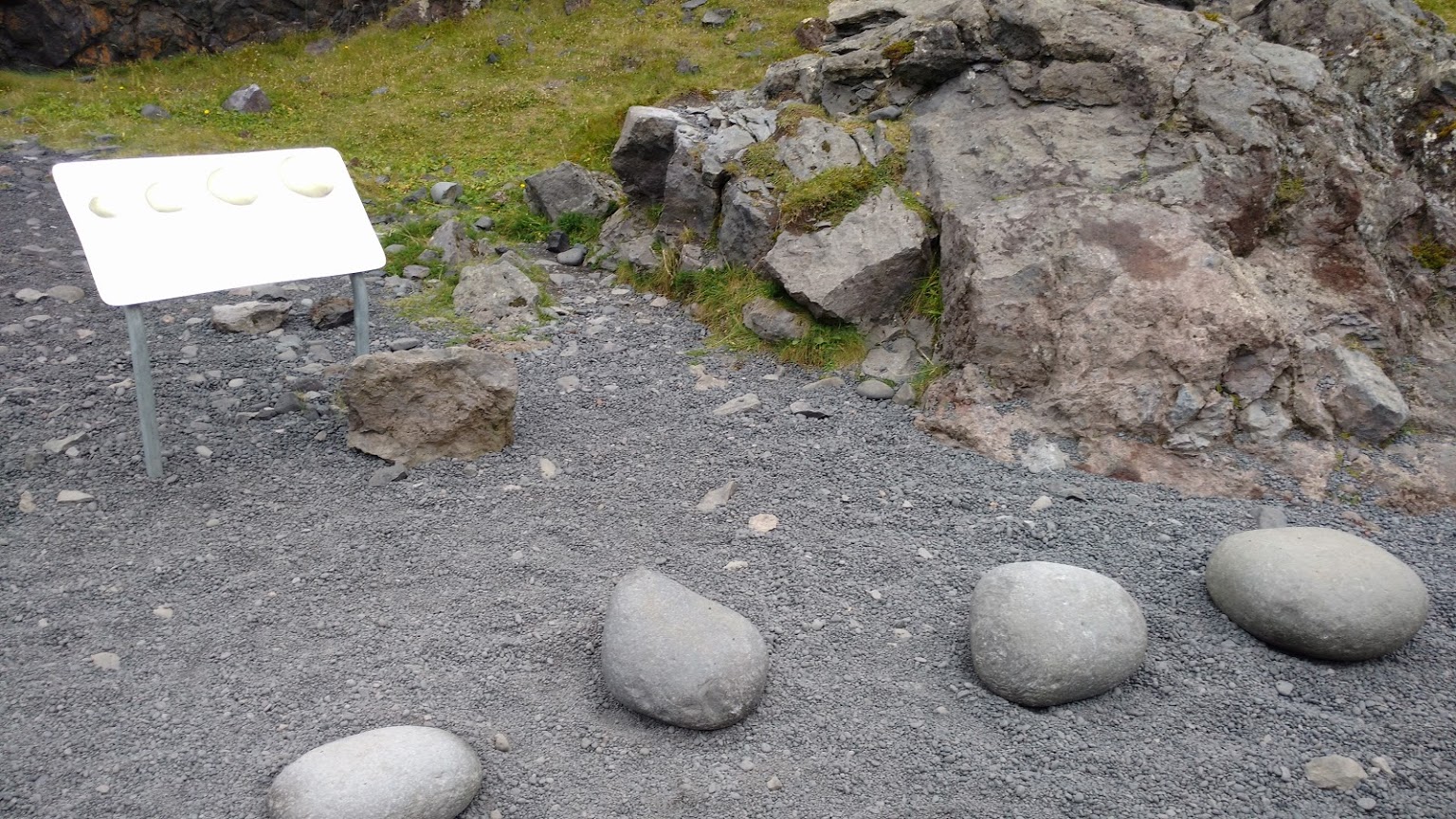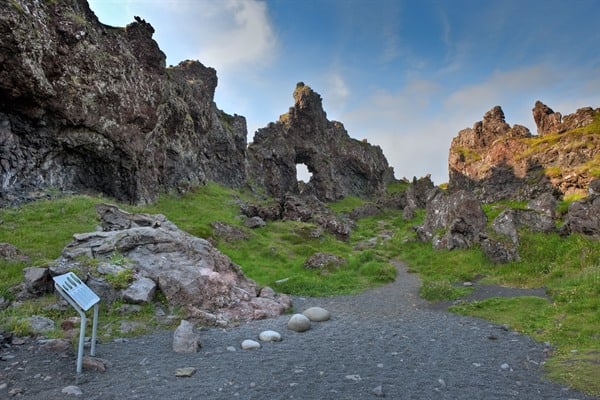Dritvík stones
The four stones were used as a qualification test for people to work on fishing boats. They weigh 23kg, 54kg, 100kg, and 154kg (50 lb, 120 lb, 220 lb, and 340 lb).

Challenge
The Dritvík stone challenge is to find out how well qualified you would be to work on a fishing boat, by working your way up from the lightest stone to the heaviest and earning your rank.
Each stone was traditionally lifted onto the natural plinth — named Stallurinn — next to the stones. The plinth was originally at waist height, but is now mostly buried beneath the sand. Lifters now like to attempt the classic stonelifting lifts and lift the stones to chest, shoulder, and sometimes press the stones.
The name given to each stone is the rank you earn when you lift it to at least waist height:
- Amlóði weakling — 23kg (50 lb)
- Hálfdrættingur half-carrier — 54kg (120 lb)
- Hálfsterkur half strong — 100kg (220 lb)
- Fullsterkur full strong — 154kg (340 lb)
History
Dritvík was one of the largest fishing stations in Iceland for centuries between the mid 16th century and the early 20th century. There were close to sixty fishing boats and dozens of huts. Hundreds of people would descend upon Dritvík for the fishing season, turning it into a bustling area for a few months at a time.
With a sudden influx of people, there needed to be a practical way to quickly test whether someone was capable of working as a crew member on the boats.
The stones became a practical ‘interview’ of sorts, where a prospective crew member would be required to lift the stones onto the plinth (at around hip height) to prove his strength. If he lifted Hálfdrættingur onto the plinth, he qualified to become an oarsman.
Physically capable men would attempt to lift the heavier stones to secure a stronger position in the crew. Sometimes literally, as stronger oarsmen would be required closer to the centre of the boat. Your strength was your path to success, and your chance for higher pay.
Over the centuries the roles given to the crew based on the stone lifted is likely to have shifted and evolved over time alongside the boats — from oarsman to cook or cleaner, and other roles. But one thing remained the same, the stones, and their test, even if only for entertainment.
It’s unlikely that the stones were only used to test eligibility to crew the boats. Lifting the stones for sport or to settle arguments is extremely likely to have been practiced — especially during downtime.
We don’t know exactly when the stones were assembled as a group, or when they started to be lifted. But we do know that Dritvík was used as a fishing station in the mid 16th century. Making it possible that the stones have sat on the black beach for 400 years.
A British fishing vessel was wrecked in Dritvík cove in 1948 and some remains of the ship lie on the beach to this day. Along with the stones, they serve as a reminder of the history of Dritvík as a fishing hub.
The sign next to the stones provides a nice summary of the stones. It reads:
The sailers (sic) who rowed out from Dritvík to fish from open boars tested their strength by lifting these stones. Each of them has a name, indicating the strength required to lift them onto the natural platform behind them. To be eligible as an oarsman rowing a boat from Dritvík, one had to be able to lift Hálfdrættingur onto the platform, Stallurinn. This used to be hip high, but is now lower.
Location
The four stones sit near a sign and their buried plinth on Djúpalónssandur beach

The precise location is on our map.
In media
Featured in Fullsterkur.
References
Stonelifting: An Ancient Test of Strength Revived - Martin Jancsics and Dr. Bill Crawford
Read the liftingstones.org letters
Join thousands of other stonelifters who read the world's most popular stonelifting newsletter.